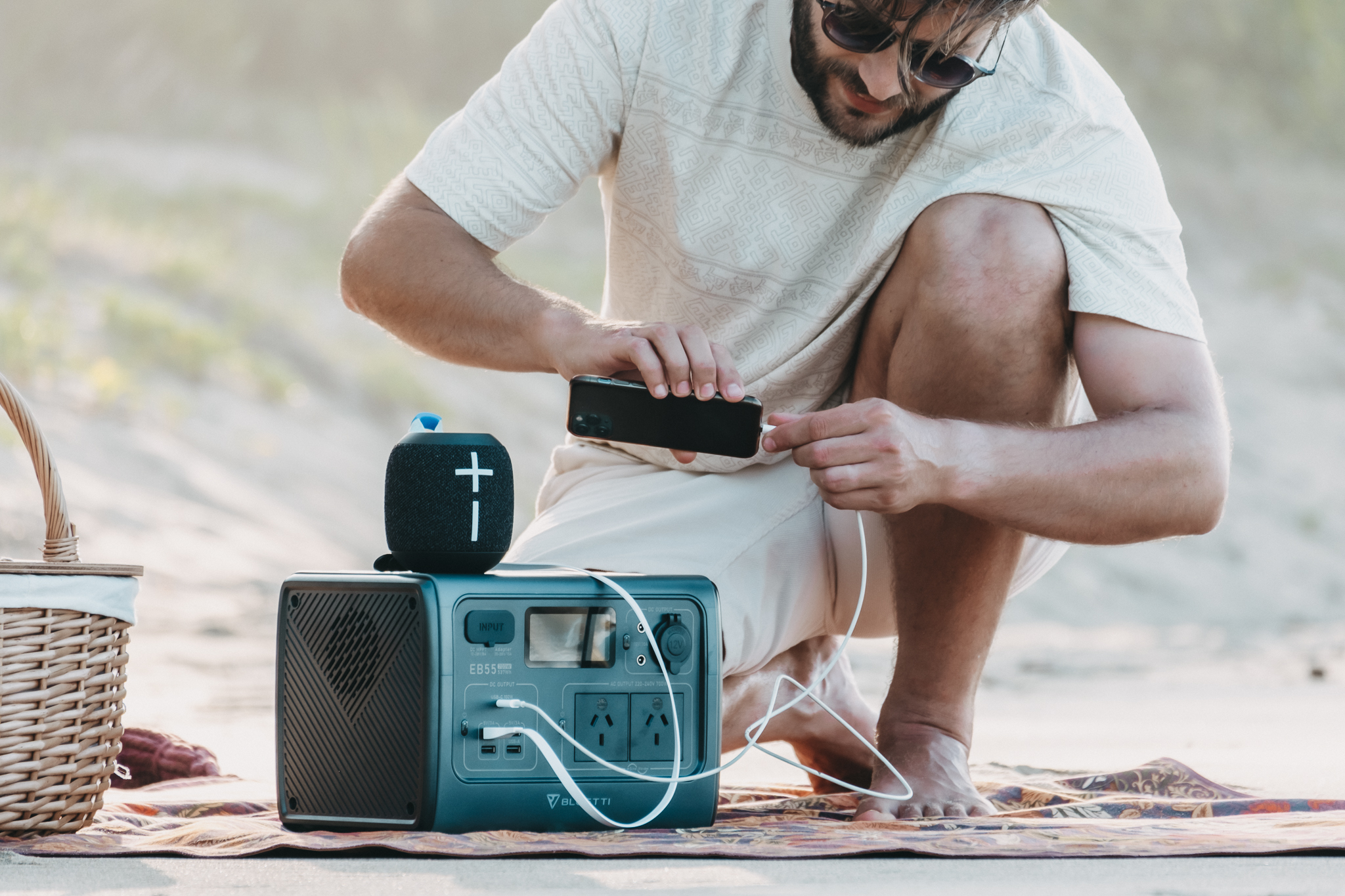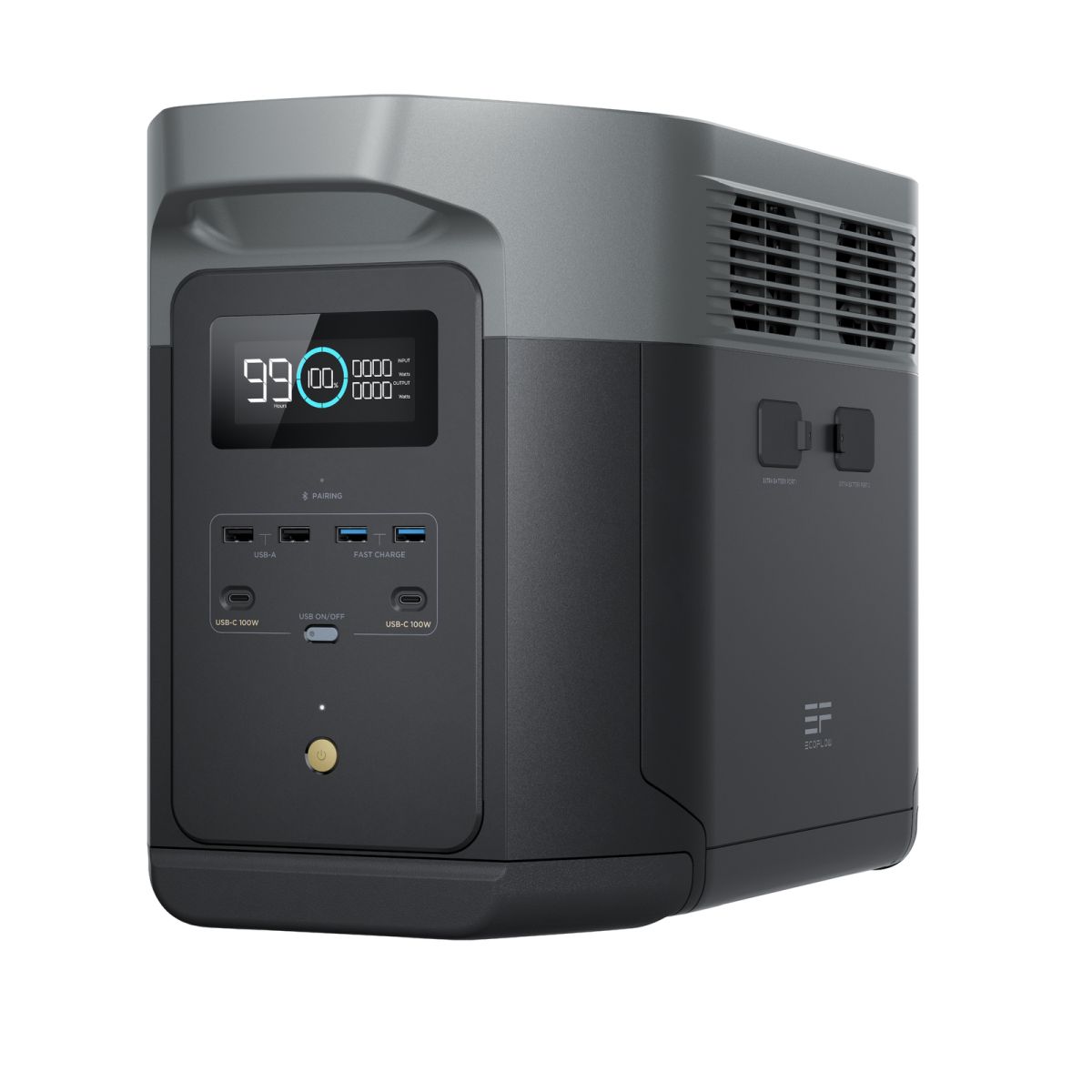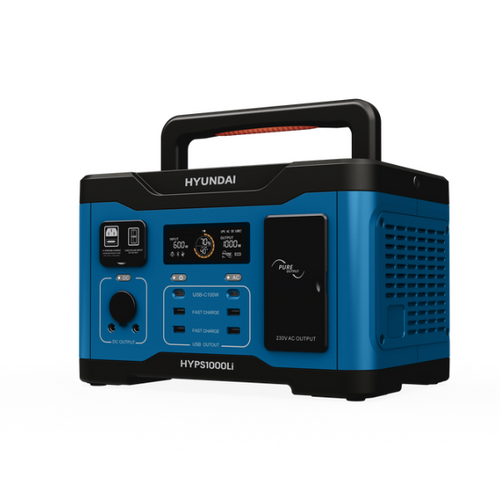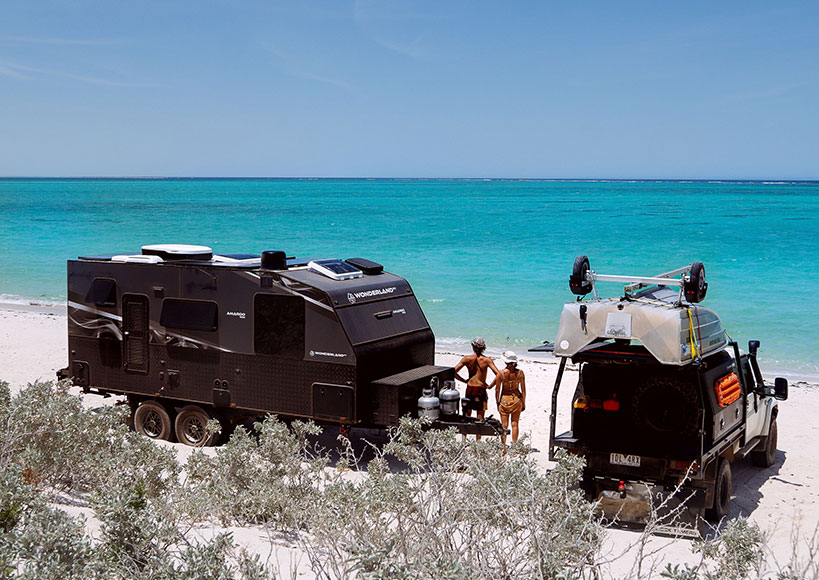In an age where our connection to the great outdoors often goes hand in hand with our reliance on technology, the concept of camping has evolved. As campers, we cherish the serenity of nature, but we also crave the convenience of our devices, whether it's for capturing stunning sunsets, staying connected with loved ones, or simply powering our essential appliances or gadgets.
The traditional fixed power installations in 4WDs or caravans are gradually giving way to a more versatile and dynamic solution: portable camping power stations. These compact and portable devices are changing the camping game, and there's a noticeable shift in the camping community towards embracing this trend.
What Is A Camping Power Station?
Portable power stations—also referred to as "power packs"—are the perfect all-in-one solution for a vast range of applications from caravans and camping to off-grid cabins. These compact, battery-powered systems provide safe, silent, and emission-free power anywhere you need it. Unlike noisy traditional fuel generators, portable power stations run on rechargeable batteries and typically include built-in inverters, USB outlets, 12V car sockets, and standard AC plugs—so you can run things like fridges, lights, phones, and even small kitchen appliances. They don’t require fuel, operate silently, and are ideal for camping, caravanning, or any outdoor adventure where reliable portable power is essential.
Why You Need a Camping Power Station?
A camping power station is a must-have for off-grid adventures, offering a clean, quiet, and convenient way to power your gear. Unlike fuel-powered generators, power stations are eco-friendly with no harmful emissions, making them a responsible choice for the environment. They operate silently—perfect for peaceful settings like national parks or campgrounds where noise is a concern. Thanks to their compact and lightweight design, they’re easy to carry and store in your vehicle. With no need for fuel, oil changes, or regular servicing, they’re also low maintenance. Plus, they come equipped with multiple output options, including USB ports, AC outlets, and DC carports, so you can charge everything from phones and laptops to camping fridges and lights with ease.
Please note: If you have a caravan, 4WD or camper trailer and travel frequently, a caravan power station is a better option. These are installed in your vehicle and are much larger – up to 400Ah – which gives you all the power you need for longer trips.
How to Choose the Right Camping Power Station for Your Needs
Picking the right camping power station comes down to understanding your power needs, your budget, and how you plan to recharge your system while off-grid. Here’s how to narrow down your options:
1. What Appliances Do You Want to Power?
Start by making a list of the appliances you plan to use—such as phones, LED lights, portable fridges, laptops, coffee machines, or even induction cooktops. Each item uses a different amount of power, measured in watts. Smaller devices like phones and lights require minimal power, while appliances like fridges and cooking gear draw much more.
To find the right power station, check the watt-hour (Wh) or amp-hour (Ah) rating. The higher the rating, the more energy it can store and deliver. For example, a 300Wh unit may be fine for charging phones and lights overnight, while a 1,000Wh+ power station is more suited to running a fridge for multiple days.
2. What’s Your Budget?
Camping power stations come in a wide range of prices, depending on size, brand, and included features. Entry-level units are more affordable but may have limited capacity or fewer output options. Premium models may include advanced features like fast charging, Bluetooth connectivity, or expandable battery capacity.
If you're on a tighter budget, focus on the essentials—enough power to meet your basic needs with reliable performance. It’s better to buy a smaller, high-quality unit than a large, unreliable one.
3. Do You Want to Bundle with a Solar Panel?
Bundling your camping power station with a compatible solar panel allows you to recharge your battery while you're off the grid—perfect for longer stays or remote adventures. Solar charging gives you energy independence, so you don't have to rely on mains power or your vehicle to recharge.
Top brands like EcoFlow, Bluetti, and Goal Zero offer solar panel bundles that are designed to work seamlessly together. Look for foldable or portable solar panels with efficient output and fast charging times. Just make sure your solar input matches the battery’s requirements to get the best performance.
Camping Power Station Brands
EcoFlow
EcoFlow power stations are known for their super-fast charging times, thanks to X-Stream technology, which can charge some models from 0–80% in under an hour. Most units also offer app connectivity, allowing you to monitor and control your power usage from your smartphone. EcoFlow models are sleek, lightweight, and user-friendly, with a wide range of port options including AC, DC, USB-A, and USB-C. Popular models like the EcoFlow River and EcoFlow Delta series offer expandable capacity and solar charging compatibility, making them ideal for campers who want flexibility and speed.
View the full EcoFlow Range here.
MaxWatt
Designed for small to medium size devices and appliances, the Maxwatt Portable Power Stations are ideal for camping, fishing, home use, and more. The stable Lithium Ternary battery (Lithium Ion NMC) and the professional Battery Management System (BMS) offers eight layers of protection, ensures battery life to maximum life cycles.
Plus, there’s a wireless and high-speed ports for charging USB-C laptops, tablets and phones in a fraction of the usual time. Advanced MPPT technology ensures faster solar recharge rates so you can hook up your solar panels and get the most efficient solar charge possible.
Key Points:
-
Offering an extensive range of camping batteries from a compact 265Wh to 1601Wh
-
The camping batteries also feature an AC inverter meaning you can run more appliances/electronics safely. They also come with built-in surge allowances and multi-stage protection. And even with all these features, they are super lightweight!
-
Choose from a range of power pack and solar bundles
View the full Maxwatt range here.
Bluetti
Bluetti power stations are growing in popularity amongst the camping community due to their small and compact size and aesthetic design.
The Bluetti AC70P is the perfect size for a 4WD weekend camp trip. Offering 864Wh, making it the perfect size to run your chest fridge in the back of your rig, while being able to run lights and charge phones. For longer trips and uses requiring the inverter, this power station can be expanded using Bluetti's expandable range.
The Bluetti AC180P Portable Power Station is a larger capacity power station with the flexibility to power most household appliances and heavy-duty DIY tools under 2000Wh. It can be used in your home, caravan or on camping trips. It can be used to charge your phone, tablet and laptop so you can stay connected even off-grid. You can also have it at the ready for home backup. The best thing about this unit is that its service life is 1-3 x longer than other portable power stations on the market today.
Key Points:
-
Impressive service life
-
Perfect for heavy-duty appliances
-
Multiple charging options
-
Some models feature a UPS mode
View the full Bluetti Range here.
Hyundai
The Hyundai Power Stations offer an excellent starting point for outdoor camping enthusiasts seeking a reliable power source. They're capable of powering your phones, laptops, lights, and more. With their compact design and convenient carry handles, you can easily transport them wherever your adventure takes you. Depending on your specific power requirements, you can select from the 921Wh option up to the robust 2150Wh model.
View the full Hyundai range here.
Camping Power Station FAQs
-
1. What size camping power station do I need?
The size depends on what appliances you plan to run and for how long. For basic needs like charging phones and running LED lights, a 300–500Wh unit is usually enough. For powering a fridge, laptop, or small appliances over multiple days, consider a 1,000Wh or larger power station.
-
2. Can a camping power station run a fridge?
Yes, but it needs to be powerful enough. Most portable fridges require 30–60 watts per hour. To run a fridge for 24 hours, you’ll typically need at least a 500Wh–1,000Wh power station, depending on the fridge’s efficiency and how long it runs each day.
-
3. How do you recharge a camping power station?
You can recharge a camping power station using mains power (AC wall socket), a 12V car outlet, or solar panels. Solar charging is great for off-grid use, but charging speed depends on panel size, sunlight, and the power station’s solar input capacity.
-
4. What’s the difference between a camping power station and a generator?
Camping power stations are battery-based and operate silently with no emissions. Generators run on fuel, are noisier, and require regular maintenance. Power stations are ideal for quiet, eco-friendly camping, especially in national parks where generators may be restricted.
A camping power station is one of the most valuable tools you can take on the road, offering clean, quiet, and reliable energy wherever your adventures take you. Whether you just need to charge your devices or power larger appliances like fridges and lights, there’s a power station to suit every type of camper and budget. By understanding your energy needs, choosing the right size, and considering features like solar compatibility, you can stay powered up no matter how far off the grid you go. Ready to find the perfect setup? Shop our camping power station range online now.
-
DISCLAIMER* Please note, this advice is general in nature and we strongly recommend consulting the product manual and where relevant, a professional installer.










